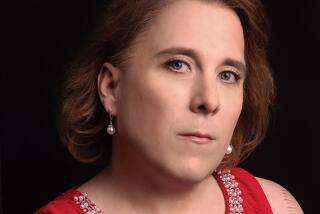Hoarding: When stuff really piles up
When an elderly Chicago couple were found buried alive in their debris-filled home recently, their plight became a public example of a poignant situation that faces millions of people: the inability to sort through and discard possessions, some of them truly just garbage.
Officials say the 75-year-old woman had injuries that “resembled rat bites,” and they speculated that she may have fallen and become trapped under trash. “When her 76-year-old husband tried to come to her aid, he apparently became trapped as well,” according to a May 25 article in the Chicago Tribune. “The stench was so strong that fire personnel had to don hazardous material suits.”
FOR THE RECORD:
Hoarding statistics: A July 17 It’s All Relative column said as many as 6 million people, or 1 in 20, may be affected by hoarding, according to the book “Stuff: Compulsive Hoarding and the Meaning of Things.” Actually, epidemiology studies show a range: from 1 in 50 people in the U.S., or 6 million, to 1 in 20 people, or 15 million, according to the author, Gail Steketee. —
The case became the latest in a string of bizarre, widely publicized incidents involving hoarding, a compulsion to accumulate large quantities of things. Basically, it’s when clutter goes out of control. In serious cases, junk is stacked everywhere; narrow paths become the only way to walk through the stacks of rubble that spread throughout a home.
Hoarding is a problem many grown children have to confront with their parents. Fortunately, most do so before the accumulated possessions become dangerous, as they did in the Chicago case.
For many elderly people, amassing a jumble of castoff belongings is a reaction to living through hard times. But a lifetime of collecting can create an old age filled with junk.
Some people respond like a neighbor of mine who chose a day when her mother was gone, waded into her overstuffed home without permission, and drove away with a pickup truck filled with her things. Her mother was devastated.
Other children hint, persuade or plead with their parents to weed out the junk. The entreaties usually do no good.
Orange County resident Marci Dodson, a medical center publications editor, grew up thinking her family’s messy house was “our dirty little secret.” She didn’t realize other people had the same problem. As her parents, now deceased, grew older, things just got worse.
“One of my siblings used to say, ‘Call the fire department and report them,’ but I couldn’t do that,” Dodson says.
Experts say hoarding — which affects people of all ages, but older people are particularly prone to it — seems to be increasing at an alarming rate. It’s so widespread, and so visual, that two TV programs now deal with it: A&E’s “Hoarders” and TLC’s “Hoarding: Buried Alive.”
While the stuff that’s collected can be old newspapers, packets of salt or other things without value, people also can hoard things of worth. Earlier this year, actress Lindsay Lohan came clean on “The Insider,” admitting that she’s a secret hoarder as a camera crew panned piles of designer fashion and shoes at her home.
A new book called “Stuff: Compulsive Hoarding and the Meaning of Things” says that as many as 6 million people, or 1 in 20, may be affected.
“In some ways, it’s a generation piece,” says Dorothy Breininger, a Los Angeles-based producer and organizing expert on A&E’s “Hoarders.”
” World War II vets were brought up to believe it was a virtue to save: The nation saved scrap metal to build planes. So they save everything, from rubber bands to bread ties.”
And the baby boom generation, in turn, has been forced to save, she says. “They inherit things they don’t want from their parents. Their grown children want them to store all their childhood possessions in the garage, even though they now live elsewhere.”
Just as they have been caretakers of parents’ and children’s health, boomers have become sandwiched in the middle as warehouses, their homes overflowing with other people’s things. Breininger is experienced in de-cluttering such homes: Her DelphiCenter for Organization, https://www.centerfororganization.com, tackles cleanup at rates ranging from $7,000 for a small apartment to $40,000 when dead animals or hazardous wastes must be removed.
The hoarding phenomenon tends to worsen as people age, says “Stuff” author Gail Steketee, dean of the School of Social Work at Boston University, who has studied the phenomenon for 20 years. She and co-author Randy Frost, of Smith College, have treated hundreds of patients. They describe the “goat trails” that must be navigated to walk between piles of trash, stacks of papers that are “churned” but never discarded, and collections of garbage and animals, both dead and alive.
Many hoarders have obsessive-compulsive disorder, a condition that begins during the teenage years and worsens with age. “These are people who are more attached to things than their friends are. They have a difficult time parting with anything,” Steketee says. By the time they reach 30, clutter has started to accumulate; by their senior years, it is a major problem.
It is increasingly viewed and studied as a mental health problem, a complex syndrome that is difficult to cure.
Most of these people “don’t think they have a psychiatric problem,” says Karron Maidment, program coordinator for UCLA’s obsessive-compulsive clinic and an expert on hoarding. “They think of themselves as being clever, creative, unique people who think outside the box.” Treatment includes anti-anxiety medicines and intensive psychotherapy programs aimed at weaning hoarders from their collections.
Elderly hoarders sometimes fall into different categories than younger ones. Some suffer from dementia; still others have had to downsize and are overwhelmed by the decisions they must make about what to keep for a smaller space.
“It’s a late-life issue,” says Steketee. “We want to hang on to our memories, and objects come to take on more significance. We start thinking about what has mattered in our lives; things become the physical embodiment of that.”
How can children help? Steketee has some suggestions:
• Don’t clean out a home without permission. “This is the fastest way to destroy your relationship with your parent.”
• Be consistent, but don’t move too fast. “A daughter might slowly help her mother empty one box while asking her about each thing before throwing it away.”
• Offer motivation. “Engage them in conversation in a meaningful way. Ask what they’d like to accomplish in their lives in the future. If that includes something like, ‘Spend more time with my grandchildren,’ the logical reply is ‘We’ll have to clean out a space for them to sit or a room to play in.’ ”
• Above all, don’t push. “The more you push someone to throw things away, the more they dig in their heels. It never works,” Steketee says.
Look in our archives for more on caring for and staying connected with aging parents.
More to Read
Sign up for our Book Club newsletter
Get the latest news, events and more from the Los Angeles Times Book Club, and help us get L.A. reading and talking.
You may occasionally receive promotional content from the Los Angeles Times.






